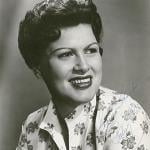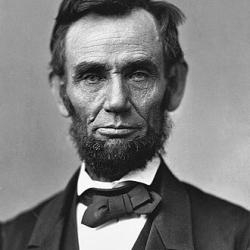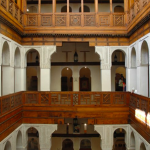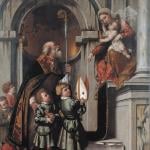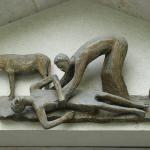1889 is the crossroads where the descendants, living persons and ancestors of previous, current and future influencers meet on the chronological timeline of earth’s history.
It is where the makers of the soft drinks we consume, the office supplies we use, and the food we put on our dinner tables lived alongside one another.
Ever wonder who originally made items you go to the grocery store to buy really were?
The makers of Corn Flakes and Ressie Pieces were real people.
Here are some of those people alive in 1889 that still have an impact on our society today.
Please Note
Wikipedia in which the Catholic Bard quotes directly for all the bio descriptions read in these articles.
This article is part of a series of Notable People Alive In 1889
And now….
Born in 1800’s
John Cadbury
(August 12, 1801 – May 11, 1889)
He was an English Quaker and proprietor, tea and coffee trader and founder of Cadbury, the chocolate business based in Birmingham, England.
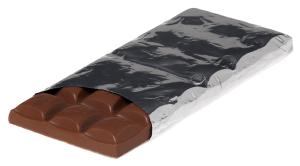
Procter of Procter and Gamble’s Grandson
The Procter & Gamble Company (P&G) is an American multinational consumer goods corporation headquartered in Cincinnati, Ohio. It specializes in a wide range of personal health/consumer health, personal care and hygiene products; these products are organized into several segments including beauty; grooming; health care; fabric and home care; and baby, feminine, and family care. Before the sale of Pringles and Duracell to Kellogg’s and Berkshire Hathaway, respectively, its product portfolio also included food, snacks, beverages, and batteries.
William Procter (industrialist)
(December 7, 1801 – April 4, 1884)
He was an English-born American industrialist and candlemaker who was the co-founder of Procter & Gamble Company in 1837, along with
James Gamble
(April 3, 1803 – 29 April 29. 1891)
He was an Irish-American soap industrialist before he was the co-founder of Procter & Gamble Company.
William Cooper Procter
(August 25, 1862 – May 2, 1934)
He was head of Procter & Gamble from 1907 to 1930 and was the last member of the founding families to lead the company.

Arm and Hammer Creator’s Wife
Nancy Church (Dwight)
(1804-1890)
Was the wife of
Austin Church
(January 8, 1799 – August 7, 1879)
He was an American medical doctor and a pioneer of bicarbonate of soda manufacturing. He was a co-founder of the company Church & Dwight in 1847 that first developed the product in America from chemical compound salts. His company was the first to use the Arm & Hammer trademark to sell the product as a baking soda.
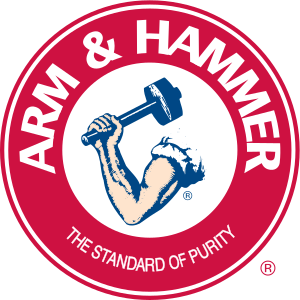
Ephraim Wales Bull
(March 4, 1806 – September 26, 1895)
He was an American farmer, best known for the creation of the Concord grape.
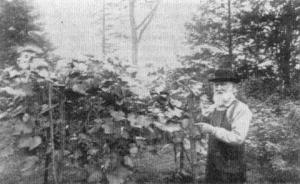
Norbert Rillieux
(March 17, 1806 – October 8, 1894)
He was a Louisiana Creole inventor who was widely considered one of the earliest chemical engineers and noted for his pioneering invention of the multiple-effect evaporator. This invention was an important development in the growth of the sugar industry. Rillieux, a French-speaking Creole, was a cousin of the painter Edgar Degas.
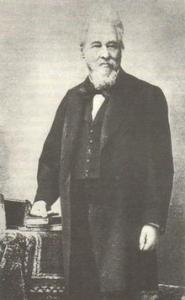
Born in 1810’s
Henri Nestlé
(August 10, 1814 – 7 July 7, 1890)
He was a German-Swiss confectioner and the founder of Nestlé, the world’s largest food and beverage company.

Edmund McIlhenny
(1815 – 25 November 1890)
He founded McIlhenny Company, which was the first to mass produce Tabasco sauce. While company legend attributes the invention of the sauce to McIlhenny, plantation owner Maunsel White (c. 1783 – December 17, 1863) is said by some to have been the first to cultivate and make a sauce from tabasco peppers in the United States, and gave the recipe and pepper pods to his friend McIlhenny.
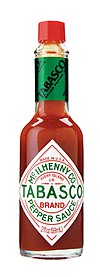
Maurice Grey
(1816 – 1897)
He created Grey Poupon which is a brand of Dijon mustard which originated in Dijon, France, in 1866.

Joseph A. Campbell
(May 15, 1817 – March 27, 1900)
He was an American businessman who is best known for founding Campbell Soup Company in 1869 when he partnered with the founder of the Anderson Preserving Company Abraham Anderson (1832 – June 10, 1915).
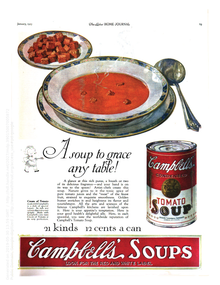
Colgate Creator’s Son
William Colgate
(January 25, 1783 – March 25, 1857)
He was an English-American industrialist who in 1806 founded what became the Colgate-Palmolive company.
The company specializes in the production, distribution, and provision of household, health care, personal care, and veterinary products.
In 1873, the company introduced its first Colgate toothpaste, an aromatic toothpaste sold in jars. In 1896, the company sold the first toothpaste in a tube, named Colgate Ribbon Dental Cream (invented by dentist Washington Sheffield
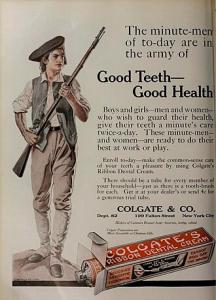
He was the father of
James Boorman Colgate
(March 4, 1818 – February 7, 1904),
He was the son of William Colgate and Mary Gilbert, was an American financier and member of the Colgate family, founders of the Colgate-Palmolive conglomerate.
Born in 1820’s
Oliver R. Chase
(July 1821 – 1902)
He invented and patented the first American candy machine, a lozenge cutter in 1847
Opening his first factory on Boston’s Melcher Street, he then developed a patented machine for pulverizing sugar in 1850. The inventor later partnered with his brother, Daniel, and Silas Edwin, to found Chase and Co., the predecessor to today’s New England Confectionery Co. (NECCO). His original lozenge evolved into the company’s flagship brand, the Necco Wafer.
His candy products live on in today’s Necco Wafers, Canada Mints and Sweethearts Conversation Hearts.
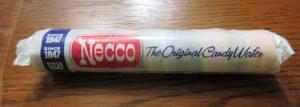
Godfrey Keebler
(February 17, 1822— September 9, 1893)
The Keebler Company is an American cookie and former cracker manufacturer. Founded in 1853, it has produced numerous baked snacks, advertised with the Keebler Elves. Keebler had marketed its brands such as Cheez-It (which bear the Sunshine Biscuits brand), Chips Deluxe, Club Crackers, E.L. Fudge Cookies, Famous Amos, Fudge Shoppe Cookies, Murray cookies, Austin, Plantation, Vienna Fingers, Town House Crackers, Wheatables, Sandie’s Shortbread, Pizzarias Pizza Chips, Chachos and Zesta Crackers, among others. Keebler slogans have included “Uncommonly Good” and “a little elfin magic goes a long way”. Tom Shutter and Leo Burnett (October 21, 1891 – June 7, 1971) wrote the familiar jingle.
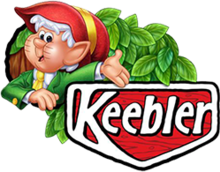
Wilhelm Friederich Schrafft
(1823 – 1906)
The Schrafft Candy Company was a candy, chocolate and cake company based in Sullivan Square, Charlestown, Massachusetts. In 1861, it introduced jelly beans to the United States and told the customers to send them off to civil war soldiers. The famous Schrafft’s neon sign is a significant landmark in Boston, although the former factory it sits above, constructed in 1928, has been redeveloped for business accommodation. Schrafft’s later expanded to form a chain of Schrafft’s restaurants in New York, and a collection of motor inns and restaurants along the eastern seaboard from New England to Florida during the 1950s and 1960s.

George Speck
(July 15, 1824 – July 22, 1914)
He was an American chef. He was known for his role in creating potato chips in Upstate New York.
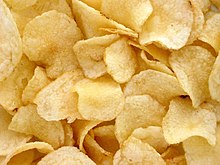
Burdette Jay Johnson
(1826–1902)
In 1864, he founded the B.J. Johnson Co. in Milwaukee, Wisconsin producing soap, candles and cheese.
In 1898, the company introduced a pale, olive-green-colored, floating bar of soap made of coconut, palm and olive oils aggressively marketed under the brand name “Palmolive“. The soap became very popular, due to an advertising campaign promoting it as the type of soap that would have been favored in ancient Egypt by the Pharaohs and especially “the Pharaoh’s Daughter”.
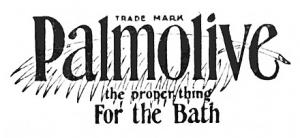
Graham Cracker Inspiration’s Son
Sylvester Graham
(July 5, 1794 – September 11, 1851)
He was an American Presbyterian minister and dietary reformer known for his emphasis on vegetarianism, the temperance movement, and eating whole-grain bread. His preaching inspired the graham flour, graham bread, and graham cracker products. Graham is often referred to as the “Father of Vegetarianism” in the United States of America.

He Is the father of
Charles Stewart Graham
(1819–1892)
Joseph Gayetty
(c.1827 – May 2, 1895)
He was an American inventor credited with the invention of commercial toilet paper. It was the first and remained only one of the few commercial toilet papers from 1857 to 1890 remaining in common use until the invention of splinter-free toilet paper in 1935 by the Northern Tissue Company.

Dr Thomas Cantrell
(1827 -1909)
Dr. Tom founded the company C&C Group plc. He opened a shop in Belfast in 1852 selling soft drinks. He went into partnership with Alderman Henry Cochrane in Dublin in 1868, thereafter trading as Cantrell & Cochrane Limited. Cochrane was appointed a baronet in 1903. For several decades, its main Dublin factory was based at Nassau Place, between Kildare Street and South Frederick Street.
Historians widely credit Dr. Cantrell as the first inventor of ‘ginger-ale’ and Cantrell & Cochrane’s embossed the slogan “The Original Makers of Ginger Ale” on its bottles. History – CC (candcgroupplc.com)
A particularly famous product in Ireland is C&C Club Orange, an orange flavored carbonated drink, was the first orange fruit juice to appear on the Irish market. It was launched in the late 1930s, with the formula refined since then to its present state. The name Club derives from the Kildare Street Club in Dublin, which commissioned C&C to make an orange-flavoured drink. Other flavours were subsequently developed, such as Club Lemon and Club Rock Shandy (an orange and lemon blend). With C&C’s increasing emphasis on alcoholic beverages, the Club range of soft drinks and bottled water was sold to Britvic Ireland in 2007.
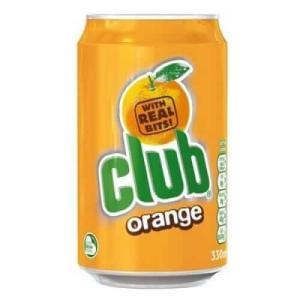
Washington Sheffield
(April 23, 1827 – November 4, 1897)
He was an American dental surgeon best known for inventing modern toothpaste in the 1870s. With the help of his son Lucius T. Sheffield, he was also the first to sell the paste in collapsible tubes. He was considered one of the most skilled dentists in New England and the United States, making important contributions to the fields of dentistry and dental surgery.
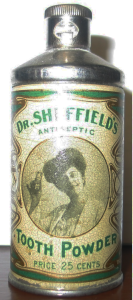
Lewis Dubois Bassett
(January 7, 1828 – 1906)
Lewis Dubois Bassett, a Quaker school teacher and farmer, began making Bassett’s ice cream in 1861. In 1885, he moved the operations from his New Jersey backyard to a storefront at 5th and Market Streets in Philadelphia. In 1892, Lewis moved the store to the new Reading Terminal Market where the still family-owned company maintains a store to this day.
Bassett’s is a 5th generation family business and is America’s oldest ice cream brand Friends of Mount Moriah Cemetery
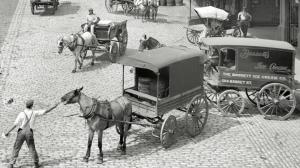
Born in 1830’s
COKE Creator’s Son
John Stith Pemberton
(July 8, 1831 –August 16, 1888)
He was an American pharmacist and Confederate States Army veteran who is best known as the inventor of Coca-Cola. On 8 May 1886, he developed an early version of a beverage that would later become Coca-Cola, but sold its rights to the drink shortly before his death in 1888.
John Stith Pemberton
+ Ann Eliza Clifford (Lewis) Pemberton (1835-1909)
= Charles Ney Pemberton (1854-1894)

John Landis Mason
(c. 1832 – February 26, 1902)
He was an American tinsmith and the patentee of the metal screw-on lid for antique fruit jars commonly known as Mason jars. Many such jars were printed with the line “Mason’s Patent Nov 30th 1858”. He also invented the first screw top salt shaker in 1858.
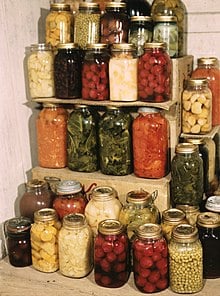
Augustin Thompson
(November 25, 1835 – June 8, 1903)
He was a physician, businessman and philanthropist who created the Moxie soft drink and the company that manufactured it (now part of the Kirin Holdings Company of Tokyo, Japan).
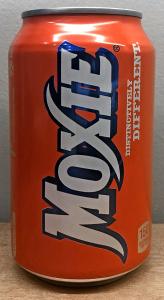
Wilhelm Hellesen
(February 2, 1836 – December 22, 1892)
He was a Danish inventor and industrialist. In 1887 he designed what is thought to be the first dry cell battery based on the Leclanché cell design.
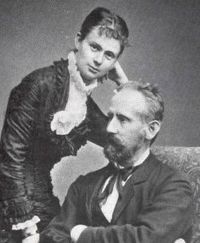
Frederick Pabst
(March 28, 1836 – January 1, 1904)
He was a German-American brewer for whom the Pabst Brewing Company was named.
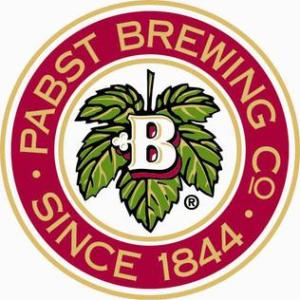
Rowntree Founder’s Brother
Henry Isaac Rowntree
(1838–1883)
He was the founder of Rowntree’s, one of the United Kingdom‘s largest confectionery businesses.
Rowntree’s is a British confectionery brand and a former business based in York, England. Rowntree developed the Kit Kat (introduced in 1935), Aero (introduced in 1935), Fruit Pastilles (introduced in 1881), Smarties (introduced in 1937) brands, and the Rolo and Quality Street brands when it merged with Mackintosh’s in 1969 to form Rowntree Mackintosh Confectionery. Rowntree’s also launched After Eight thin mint chocolates in 1962. The Yorkie and Lion bars were introduced in 1976. Rowntree’s also pioneered the festive selection box (a gift consisting of assorted bars and sweets) which in the UK have been a staple gift at Christmas for over a century.
Founded in 1862, the company developed strong associations with Quaker philanthropy. Throughout much of the 19th and 20th centuries, it was one of the big three confectionery manufacturers in the United Kingdom, alongside Cadbury and Fry, both also founded by Quakers.
He was the Brother John Stephenson Rowntree (1834-1907)
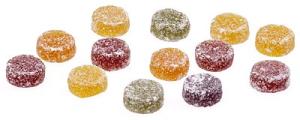
Margaret E. Knight
(February 14, 1838 – October 12, 1914 )
She was an American inventor, notably of a machine to produce flat-bottomed paper bags. She has been called “the most famous 19th-century woman inventor”. She founded the Eastern Paper Bag Company in 1870, creating paper bags for groceries similar in form to the ones that would be used in later generations. Knight received dozens of patents in different fields and became a symbol for women’s empowerment.
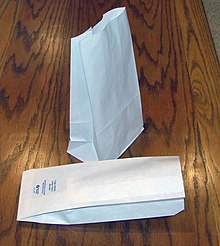
John A. Kimberly
(July 18, 1838 – January 21, 1928)
He was an American manufacturing executive, a founder of Kimberly-Clark Corporation of Neenah, Wisconsin.
Kimberly-Clark Corporation is an American multinational consumer goods and personal care corporation that produces mostly paper-based consumer products. The company manufactures sanitary paper products and surgical & medical instruments. Kimberly-Clark brand name products include Kleenex facial tissue, Kotex feminine hygiene products, Cottonelle, Scott and Andrex toilet paper, Wypall utility wipes, KimWipes scientific cleaning wipes and Huggies disposable diapers and baby wipes.

William Painter
(November 20, 1838 – July 15, 1906)
He was an American mechanical engineer, inventor and the founder of Crown Holdings, Inc., a Fortune 500 company. He most notably invented the crown cork bottle cap and bottle opener.
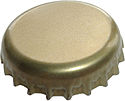
Adolphus Busch
(July 10, 1839 – October 10, 1913)
He was the German-born co-founder of Anheuser-Busch with his father-in-law, Eberhard Anheuser (September 27, 1806–May 1880) .
To build Budweiser as a national beer, Busch created a network of rail-side ice-houses and launched the industry’s first fleet of refrigerated freight cars. However, throughout his life, he jokingly referred to his beer as “dot schlop” and preferred wine to drink. Later budweiser from Budějovice has been named “the beer of kings” since the 16th century. Adolphus Busch adapted the slogan to “the Kings Of Beers.” The trademarks of these slogans owned by Anheuser Busch in the United States.
When Busch implemented pasteurization (1878) as a way to keep the beer fresh for longer, his company was able to profit from shipping beer across the country. Busch soon acquired breweries in Texas which allowed his operation to distribute to Mexico and California. Busch was an early adopter of bottled beer and founded the Busch Glass Company to make bottles for his product. In 1901 sales surpassed the one million barrels of beer benchmark.
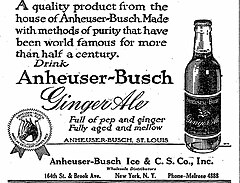
Born in 1840’s
Lorenzo Dow Baker
(March 15, 1840 – June 21, 1908)
He was an American sailor, ship’s captain and businessman whose 1870 voyage from the Orinoco to Jamaica and then to Philadelphia launched the modern banana production industry.
In 1881 he partnered with his brother-in-law Elisha Hopkins to form L.D. Baker & Co. In 1885 he joined forces with Andrew W. Preston and eight others to form the Boston Fruit Company, which led to several successive partnerships, ending in the 1899 formation of the United Fruit Company, now Chiquita.
Baker’s success caused Wellfleet to become a summer resort.
Baker left a fortune of $4 million (equivalent to $135,644,444 in 2023) upon his death in 1908.
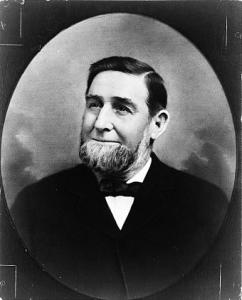
Thomas J. Barratt
(1841–1914)
He was an English businessman who was the chairman of the soap manufacturer A. & F. Pears. A pioneer of brand marketing, he has been called “the father of modern advertising“.
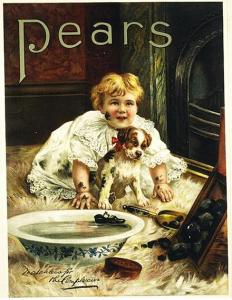
Charles Alfred Pillsbury
(December 3, 1842 – September 17, 1899)
He was an American businessman, flour industrialist, and politician. He was a co-founder of the Pillsbury Company.

James Vernor
(April 11, 1843 – October 29, 1927)
He was an American pharmacist and druggist who began selling Vernors brand ginger ale in 1880.
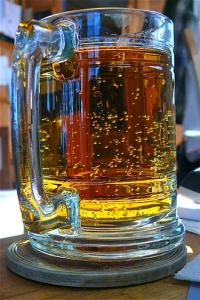
Adolphus W. Green
(January 14, 1843 – March 8, 1917)
He was an American attorney and businessman. He was the co-founder of the National Biscuit Company (now known as Nabisco, owned by Mondelēz International) in 1898. A year later, in 1899, he was the first person to sell packaged biscuits. He served as the President of the National Biscuit Company from 1905 to 1917.

George Warrington McGill
(March 9, 1844 – September 30, 1917)
McGill was already famous and well-off from his brass paper fasteners and his various paper fastener punches and presses. And in 1878 he introduces his Single-Stroke Staple Press, later to be called the Staple Press No 1.

Henry J. Heinz
(October 11, 1844 – May 14, 1919)
He was an American entrepreneur who co-founded the H. J. Heinz Company of Pittsburgh, Pennsylvania.
He was involved in the passage of the 1906 Pure Food and Drug Act. Many of his descendants are known for philanthropy and involvement in politics and public affairs. His fortune became the basis for the Heinz Foundations.
Heinz manufactures food products in plants on six continents, and markets these products in more than 200 countries and territories. The company claims to have 150 number-one or number-two brands worldwide. Heinz ranked first in ketchup in the US with a market share in excess of 50%; the Ore-Ida label held 46% of the frozen potato sector in 2003.
Since 1896, the company used its “57 Varieties” slogan; it was inspired by a sign advertising 21 styles of shoes, and Henry Heinz chose the number 57 even though the company manufactured more than 60 products at the time, because “5” was his lucky number and “7” was his wife’s.
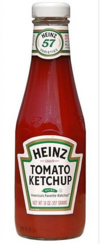
Anna Mangin
(October 1844 – March 1, 1931)
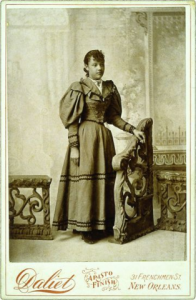
She was an American inventor, educator, and caterer. She invented a kitchen tool she called a pastry fork in 1891. This was different from the eating utensil also known as a pastry fork.

John J. Loud
(November 2, 1844 – August 10, 1916)
He was an American inventor known for designing the first ballpoint pen.
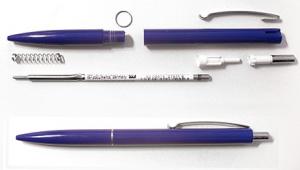
Johnson & Johnson
Robert Wood Johnson I
(February 20, 1845 – February 7, 1910)
He joined his brothers, Edward Mead Johnson, (April 23, 1852 – March 20, 1934) and James Wood Johnson( 1856–1932) and created a line of ready-to-use sterile surgical dressings in 1886. They founded Johnson & Johnson in 1886 with 14 employees, eight women and six men. Johnson & Johnson opened its first factory building in the old Janeway and Carpenter factory on Neilson Street in New Brunswick, New Jersey. They manufactured sterile surgical supplies, household products, and medical guides. Those products initially featured a logo that resembled the signature.
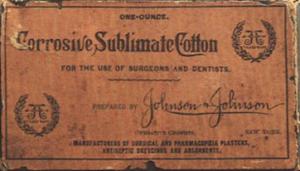
Pietro Barilla senior – Archivio Storico Barilla
(May 3, 1845 – August 17, 1912)
He founded Barilla which is an Italian multinational food company in 1877 as a bakery shop in Parma, Italy. The company expanded in 1908, and in 1910 Barilla inaugurated a new pasta factory equipped with a “continuous baking” oven. It is the world’s largest pasta producer.

Carmel Winery’s Founder’s Family Tree
James Mayer de Rothschild
( May 15, 1792 – 15 November 1868)
He was a German–French banker and the founder of the French branch of the prominent Rothschild family. He is the father of
Edmond James de Rothschild
(August 19, 1845 – November 2, 1934)
He founded Carmel Winery (Hebrew: יקבי כרמל) is a vineyard and winery in Israel in 1882. Its products are exported to over 40 countries. It is the largest winery in Israel, with a local market share of almost 50%.
Edmond was a strong supporter of Zionism, and his large donations lent significant support to the movement during its early years, which helped lead to the establishment of the State of Israel—where he is simply known as “The Baron Rothschild”, “HaBaron” (lit. ’The Baron’), or “Hanadiv Hayeduah” (lit. ’The noble donator’).’

Edward Irvin Scott
(May 13, 1846 – Apr 24, 1931)
He was the founder of Scott Paper Company. It was a manufacturer and marketer of sanitary tissue products with operations in 22 countries. Its products were sold under a variety of well-known brand names, including Scott Tissue, Cottonelle, Baby Fresh, Scottex and Viva. Consolidated sales of its consumer and commercial products totalled approximately $3.6 billion in 1994. The company was acquired by the Kimberly-Clark Corporation in 1995.
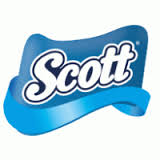
Adolph Coors
(February 4, 1847 – June 5, 1929)
He was a German-American brewer who founded the Adolph Coors Company in Golden, Colorado, in 1873.
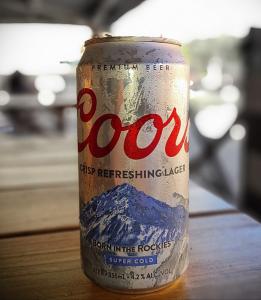
Henry Osborne Havemeyer
(October 18, 1847 – December 4, 1907)
He was an American industrialist, entrepreneur and sugar refiner who founded and became president of the American Sugar Refining Company in 1891.
The American Sugar Refining Company (ASR) was the most significant American business unit in the sugar refining industry in the early 1900s. It had interests in Puerto Rico and other Caribbean locations and operated one of the world’s largest sugar refineries, the Domino Sugar Refinery in Brooklyn, New York.
Domino Foods has been a renowned brand in the United States East Coast markets for more than 100 years. The brand name, Domino, was officially adopted in 1901. Later, the distinctive yellow bags of Domino Sugar became the highly recognizable packaging of granulated sugar.
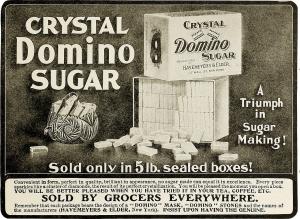
Thomas Lipton
(May 10, 1848 – October 2, 1931)

He was a Scotsman of Ulster-Scots parentage who was a self-made man, as company founder of Lipton Tea, merchant, philanthropist and yachtsman who lost 5 straight America’s Cup races.
He engaged extensive advertising for his chain of tea stores and his brand of Lipton teas. He boasted that his secret for success was selling the best goods at the cheapest prices, harnessing the power of advertising, and always being optimistic. He was the most persistent challenger in the history of the America’s Cup yacht race.
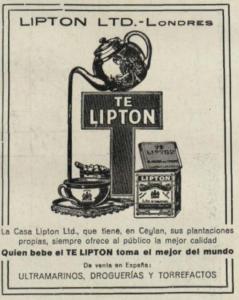
Friedrich Soennecken,
(September 20, 1848 –July 2, 1919)
He was an entrepreneur and inventor. He was the founder of Soennecken, a German office supplier.
He is best known for the reintroduction of a Rundschrift (round script) style of calligraphy and the broad pen nib associated with it. Whilst ronde script rendered with quill originated in late 16th-century France and was widely used in the country throughout the 17th and 18th centuries, it fell out of popularity after the invention of the mass-produced pointed pen from steel in early 19th century.

Round writing was designed to be a visually appealing, standardized style of penmanship which was easy to learn and execute, and Soennecken published books on the topic in several languages. As a result, broad-nibbed pen (this time from steel) was popular again not just in Germany, but also in France, Russia and elsewhere; scribes of the French Ministry of Finance used it even until right after World War II.
In 1888, Friedrich Nietzsche wrote to a friend that he had finally discovered both a quality paper to write on and a quality pen from Germany: Soenneckens Rundschrift Federhalter.
Soennecken also introduced the two-hole punch and the ring binder. In 1876 he and his company relocated to Poppelsdorf, near Bonn, to be closer to the University which later awarded him the honorary title Dr. med. h. c..
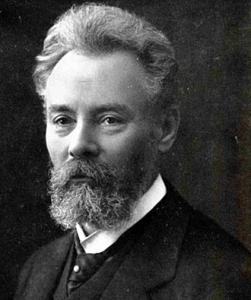
Born in 1850’s
R. J. Reynolds
(July 20, 1850 – July 29, 1918)
He was an American businessman and founder of the R. J. Reynolds Tobacco Company. (RJR) is the largest tobacco company in the United States.
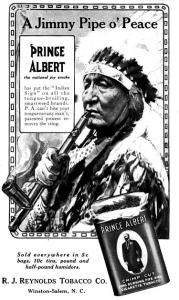
Charles Elmer Hires
(August 19, 1851 – July 31, 1937)
He was an American pharmacist and an early promoter of commercially prepared root beer. He founded the Charles E. Hires Co., which manufactured and distributed Hires Root Beer.

John Harvey Kellogg,
(February 26, 1852 – December 14, 1943)
He was an American businessman, inventor, physician, and advocate of the Progressive Movement. He was the director of the Battle Creek Sanitarium in Battle Creek, Michigan, founded by members of the Seventh-day Adventist Church. It combined aspects of a European spa, a hydrotherapy institution, a hospital and high-class hotel. Kellogg treated the rich and famous, as well as the poor who could not afford other hospitals. According to Encyclopædia Britannica, his “development of dry breakfast cereals was largely responsible for the creation of the flaked-cereal industry.”
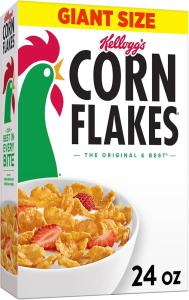
Joel Owsley Cheek
(December 8, 1852 – December 14, 1935)
He was an American businessman and philanthropist. He was the founder of the Maxwell House coffee brand.
Condensed Milk Creator’s Family Tree
Gail Borden
(November 9, 1801 – January 11, 1874)
He created a process in 1853 to make sweetened condensed milk. Earlier, Borden helped plan the cities of Houston and Galveston in 1836.
Borden’s process for making sweetened condensed milk enabled the dairy product to be transported and stored without refrigeration, and for longer periods than fresh milk.

Borden was distantly related to
Robert Borden
(1854–1937)
Canada’s Prime Minister during World War I.
One of his great-grandchildren was Gail Borden (February 19, 1907 – September 11, 1991) an American figure skater in the 1932 Winter Olympics.
Another notable relative is the infamous Lizzie Borden (July 19, 1860 – June 1, 1927) from the Fall River murders.
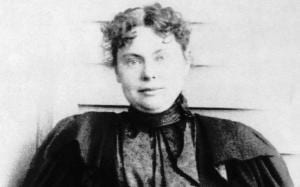
Stephen Wingrove
(1854-1923)
He worked at Spratt’s which was the world’s first large-scale manufacturer of dog biscuits.
Spratt’s built their first oven in 1870 at the old London Armoury Company factory in Henry Street. Shortly afterwards, Wingrove joined the business, and was acknowledged to be the driving force of the firm. He worked in it for over 50 years.
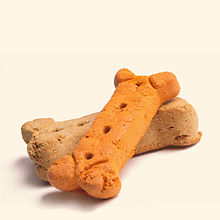
French Mustard Creators
George Jackson French (1854-1926)
Francis J. French (1868-1945)
The brothers developed French’s Mustard, which was introduced at the 1904 World’s Fair.
C.W. Post
(October 26, 1854 – May 9, 1914)
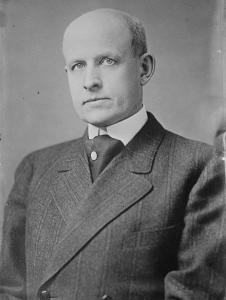
He was an American innovator, breakfast cereal and foods manufacturer and a pioneer in the prepared-food industry. He was the founder of what is now Post Consumer Brands.
They are headquartered in Lakeville, Minnesota and the company, founded in 1895 by owns a large portfolio of cereal brands that include Bran Flakes, Honey Bunches of Oats, Golden Crisp, Grape-Nuts, Honeycomb, Oreo O’s, Pebbles, and Waffle Crisp, among others. The company also produces several pet food brands, including Rachael Ray Nutrish, Kibbles ‘n Bits, and 9Lives, and markets Peter Pan Peanut Butter.
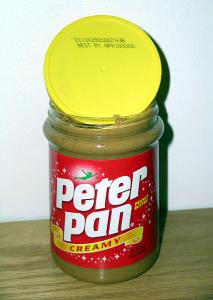
Henry Parsons Crowell
(1855–1944)
He was an American businessman and philanthropist. In 1881, Crowell purchased the Quaker Mill Company, and subsequently the brand name Quaker, and launched the first breakfast cereal advertising campaign in a magazine. He also purchased the bankrupt Quaker Oat Mill Company. In 1901, he founded the Quaker Oats Company.
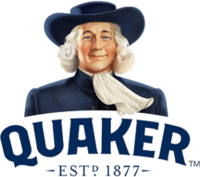
Samuel Bath Thomas
(1855–1919).
He was founded Thomas the maker of English muffins and bagels in North America, which was established in 1880. Advertisements for the muffins place emphasis on their “nooks and crannies”. The company also produces toasting or swirl breads, pitas, wraps, and bagels.
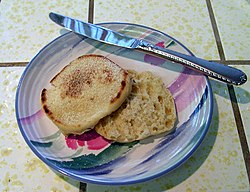
King Camp Gillette
(January 5, 1855 – July 9, 1932)
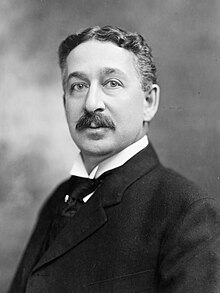
He was an American businessman who invented a bestselling safety razor. Gillette’s innovation was the thin, inexpensive, disposable blade of stamped steel. Gillette is often erroneously credited with inventing the so-called razor and blades business model in which razors are sold cheaply to increase the market for blades. However, Gillette Safety Razor Company adopted the business model from its competitors.
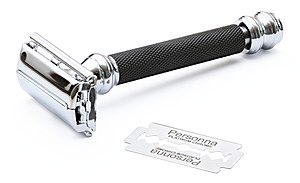
Harry M. Stevens
(June 14, 1855 – May 3, 1934)
He was a food concessionaire from England credited with being America’s foremost ballpark concessionaire. He is also attributed by various sources as being the inventor of the hot dog.
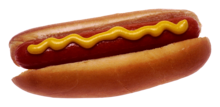
Joy Morton
(September 27, 1855 – May 10, 1934)
He was an American businessman and entrepreneur best known for founding Morton Salt and establishing the Morton Arboretum in Lisle, Illinois.

John Dewar, 1st Baron Forteviot
(June 6, 1856 – November 23, 1929)
He was a Scottish businessman, elder son of the founder of John Dewar & Sons company and a Liberal Member of Parliament.

Paper clip Creator Samuel B. Fay
(December 30th 1856 – May 30th 1953)
According to the Early Office Museum, the first patent for a bent wire paper clip was awarded in the United States to Samuel B. Fay in 1867. This clip was originally intended primarily for attaching tickets to fabric, although the patent recognized that it could be used to attach papers together. Fay received U.S. patent 64,088 on April 23, 1867. Although functional and practical, Fay’s design along with the 50 other designs patented prior to 1899 are not considered reminiscent of the modern paperclip design known today. Another notable paper clip design was also patented in the United States by Erlman J. Wright on July 24, 1877, patent #193,389. This clip was advertised at that time for use in fastening together loose leaves of papers, documents, periodicals, newspapers etc.

Fannie Farmer
(March 23, 1857 – January 16, 1915)
She was an American culinary expert whose Boston Cooking-School Cook Book became a widely used culinary text.

Charles Alderton
(June 21, 1857 – May 29, 1941)
He was an American pharmacist and the inventor of the carbonated soft drink Dr Pepper.
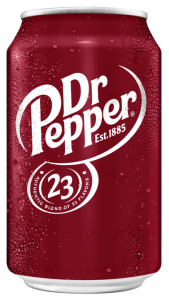
Milton S. Hershey
(September 13, 1857 – October 13, 1945)
He was an American chocolatier, businessman, and philanthropist.
Trained in the confectionery business, Hershey pioneered the manufacture of caramel, using fresh milk. He launched the Lancaster Caramel Company, which achieved bulk exports, and then sold it to start a new company supplying mass-produced milk chocolate, previously a luxury good.
The first Hershey bars were sold in 1900 and proved so popular that he was able to build his own company town of Hershey, Pennsylvania. Hershey’s philanthropy extended to a boarding school, originally for local orphans, but accommodating around 2,000 students as of 2016. In World War II, the company developed a special non-melting bar for troops serving overseas. The Hershey Company, known as Hershey’s, is one of the world’s biggest confectionery manufacturers.
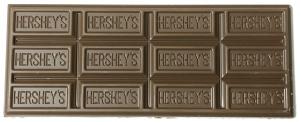
Jerome Monroe Smucker
(December 5, 1858 – March 20, 1948)
He was an American farmer and entrepreneur who founded The J.M. Smucker Company food and beverage firm in 1897, starting out selling apple butter from the back of a horse-drawn wagon.

Oscar F. Mayer
(March 29, 1859 – March 11, 1955)
He was a German American who founded the processed-meat firm Oscar Mayer that bears his name. In 1883, Mayer and his brother Gottfried leased the Kolling Meat Market on the near-northside of Chicago. The Mayer brothers sold bratwurst, liverwurst, and weißwurst, which were popular in the predominantly German neighborhoods around their Chicago meat market.
Oscar Mayer is known today for its hot dogs, bologna, bacon, ham, and Lunchables products. The company is a subsidiary of the Kraft Heinz Company and based in Chicago, Illinois.

Chris L. Rutt
(October 8, 1859 – 1936)
He was a managing editor for the St. Joseph News-Press who is credited with coming up with the recipe and name for Aunt Jemima pancakes.
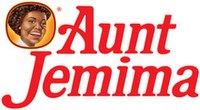
Born in 1860’s
William Morrison (dentist) –
(1860–1926)
He was an American dentist and inventor who is best known for developing the cotton candy machine
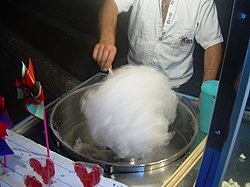
Frank H. Fleer
(1860 —November 1, 1921)
He was an American confectioner who is thought to have developed the first bubble gum. Fleer founded the Frank H. Fleer Corporation in 1919 as a gum manufacturer. Fleer’s original formulation, called Blibber-Blubber, was never marketed to the public. It was not until 1928 that Walter Diemer (January 8, 1905 – January 8, 1998), an accountant in Fleer’s company, was able to refine the formulation and became marketed by Fleer’s company as Dubble Bubble.
Fleer’s company also went on to be innovators in the baseball card business, adding trading cards in 1923.

William Wrigley Jr.
(September 30, 1861 – January 26, 1932)
He was an American chewing gum industrialist. He founded the Wm. Wrigley Jr. Company in 1891.
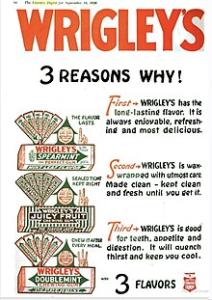
Deodorant’s Creators
Dr. Abraham D. Murphey
[1863-1935]
He developed liquid antiperspirant to help surgeons with sweaty hands.
He was the father of
Edna Grace Albert (née Murphey)
[1887-1969]
She was the creator of the Odorono brand of deodorant and originator of modern-day deodorant marketing strategies (1912). Edna subsequently found her dad’s antiperspirant useful on underarms and began marketing the product to women. There had been other previous deodorant/antiperspirant inventions previous to Murphey’s, such as the first modern commercial deodorant, Mum In 1888,, However, Murphey’s was the product that became widely distributed.
For More see Cosmetics and Skin
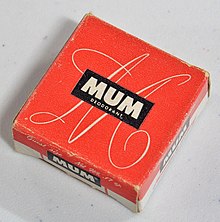
Charles Roser
(November 16, 1864 – April 12, 1937)
The Philadelphia baker invented The who likely took inspiration for the recipe from the fig roll, a baked good introduced to the U.S. by British immigrants. Roser used a machine invented by James Henry Mitchell which allowed for the extrusion of fig jam and cookie dough at the same time into a long, continuous roll. The recipe was sold to the Kennedy Biscuit company, and entered mass production at the F. A. Kennedy Steam Bakery in 1891. The cookie was christened the “Newton” by the plant manager, James Hazen, using the name of the Boston suburb of Newton, Massachusetts.
The Kennedy Biscuit Company was one of eight bakeries bought out by William Moore (October 28, 1848 – January 11, 1923) in 1889 to create the New York Biscuit Company. This company merged with the American Biscuit Company in 1898 to form the “National Biscuit Company” – or Nabisco. The recipe for Newtons along with the manufacturing machine were among the assets brought into the new company, and the cookies were trademarked as “Fig Newtons”.
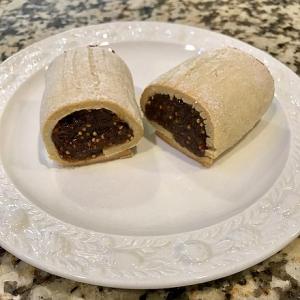
Vegemite Creator’s Parents
William Hugh Callister1864–1926
+ Rosetta Ann Dixon Callister 1866–1909
= Cyril Callister
(February 16, 1893 – October 5, 1949)
He was an Australian chemist and food technologist who developed the Vegemite yeast spread. As well as Vegemite, he is known for his contributions towards processed cheese.
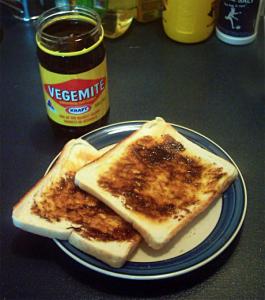
John J. McLaughlin
(March 2, 1865 – January 28, 1914)
He was a Canadian pharmacist and manufacturer who was the founder of Canada Dry.
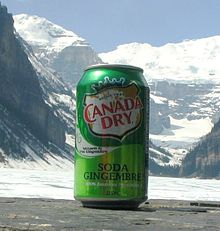
Alfred L. Cralle
(September 4, 1866 – May 6, 1919)
He was an American businessman and inventor, best known for inventing the “Ice Cream scooper“.
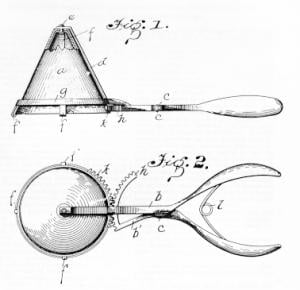
Edwin Binney
(November 24, 1866 – December 17, 1934)
He was an American entrepreneur and inventor, who created the first dustless white chalk, and along with his cousin C. Harold Smith (1860 – 1931), was the founder of handicrafts company Binney & Smith, which marketed his invention of the Crayola crayon.
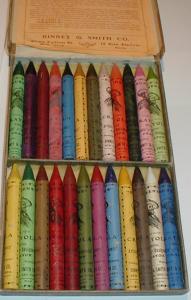
Band-Aid Creator’s Parents
Richard Ensign Dickson (abt.1867-abt.1945) |
+ Minnie (Hester) Dickson (abt.1865-abt.1929)
= Earle Dickson
(October 10, 1892—September 21, 1961)
He was an American inventor best known for inventing adhesive bandages in the US. He lived in Highland Park, New Jersey, for a large portion of his life.

Caleb Bradham
(May 27, 1867 – February 19, 1934)
He was an American pharmacist, best known as the inventor of soft drink Pepsi.
During the Great Depression, Pepsi gained popularity following the introduction in 1934 of a 12-ounce (355 mL) bottle. Prior to that, Pepsi and Coca-Cola sold their drinks in 6.5-ounce (192 mL) servings for about $0.05 a bottle. [10] With a radio advertising campaign featuring the popular jingle “Nickel, Nickel” – first recorded by the Tune Twisters in 1940 – Pepsi encouraged price-conscious consumers to double the volume their nickels could purchase. The jingle is arranged in a way that loops, creating a never-ending tune:
“Pepsi-Cola hits the spot / Twelve full ounces, that’s a lot / Twice as much for a nickel, too / Pepsi-Cola is the drink for you.”
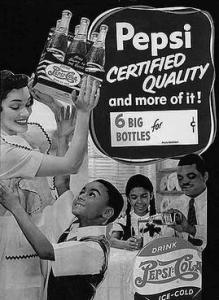
John Mackintosh
(1868–1920)
Mackintosh’s was founded by John and his wife, Violet (née Taylor), who bought a pastry shop in Halifax with their joint savings of £100 in 1890, the year that they married. Violet, who had been a confectioner’s assistant before her marriage, ran the shop and her husband continued to work at a cotton mill. To attract customers, they decided to sell a special toffee. Violet developed a recipe which blended the traditional, brittle English butterscotch with soft, American caramel, and they sold the toffee as Mackintosh’s Celebrated Toffee. The toffee’s success enabled Mackintosh to expand the business beyond Halifax by 1894. Indeed, it was so successful that it “ultimately transformed popular understanding of the term ‘toffee’, previously a description of any sugar or boiled sweet.
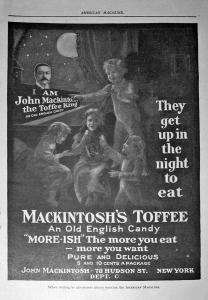
Scotch Tape Creator’s Parents
Maud Atherton Shumway Drew (1868-1952)
Was the mother of
Richard Gurley Drew
(June 22, 1899 – December 14, 1980)
He was an American inventor who worked for Johnson and Johnson, Permacel Co., and 3M in St. Paul, Minnesota, where he invented masking tape and cellophane tape.

Felix Hoffmann
(January 21, 1868 – February 8, 1946)
In 1893 Hoffmann joined the newly established pharmaceutical research department at the Bayer Company in Elbersfeld where he famously synthesized two drugs: aspirin, one of the most widely beneficial drugs ever, and heroin, one of the most harmful of illegal substances. These two drugs represent the efforts of late-19th-century chemists to create new substances that could be used as medicines, not just to isolate active ingredients from natural products or to imitate them.
One approach toward this end was to modify known physiologically active substances; another was to perform chemical operations on one or more of the myriad organic compounds created as products or by-products of the synthetic dye industry, which had developed in the 19th century and was particularly strong in Germany. Felix Hoffmann | Science History Institute
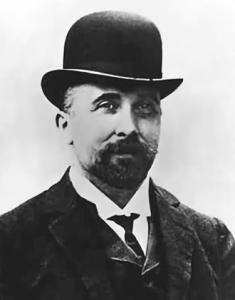
Charles Leiper Grigg
(May 11, 1868 – April 16, 1940)
He was the inventor of 7 Up, originally known as Bib-Label Lithiated Lemon-Lime Soda. He invented the drink in October 1929. Grigg became acquainted with the carbonated beverage business after moving to St. Louis, Missouri. Prior to inventing 7 Up, Grigg had created an orange soft drink named “Whistle” for the Vess Soda Company. It is still made and sold in St. Louis.
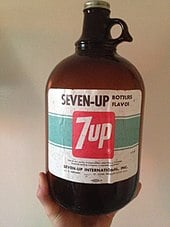
William E. Corbin
(1869–1951)
He was the inventor of Nibroc paper towels and was the mayor of the city of Berlin, New Hampshire (1931–1932).
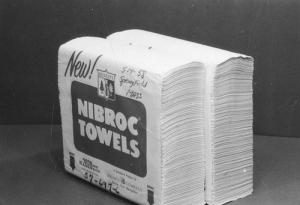
Born in 1870’s
William H. Danforth
(September 10, 1870 – December 24, 1955)
He was an American businessman known for founding Ralston Purina in St. Louis, Missouri in 1894. He was a co-founder of the American Youth Foundation (AYF) and the author of the book, I Dare You!.
Ralston Purina Company was a St. Louis, Missouri,–based American conglomerate with substantial holdings in animal feed, food, pet food, consumer products, and entertainment. On December 12, 2001, it merged with Swiss food-giant Nestlé’s Friskies division to form Nestlé Purina PetCare Company.
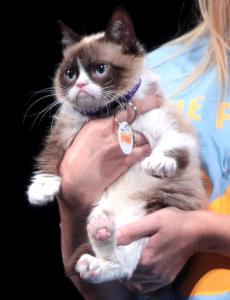
Pepperidge Farms Founder’s Father
Joseph Fogarty (1871-d.)
+ Margaret Fogarty (Healy) (1872-d.)
= Margaret Rudkin
September 14, 1897 – June 1, 1967
She was an American businesswoman who founded Pepperidge Farm and was the first female member of the board at the Campbell Soup Company.
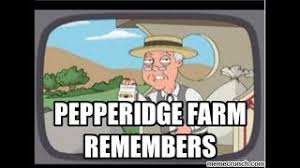
Edward Charles Barq Sr.
(1871-1943)
The Barq’s Brothers Bottling Company was founded in 1890 in the French Quarter of New Orleans, by Edward Charles Edmond Barq and his older brother, Gaston. The brothers bottled carbonated water and various soft drinks of their own creation. Early on, their most popular creation was an orange-flavored soda called Orangine.
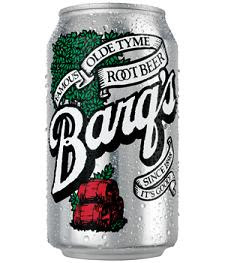
Dairy Queen Founders
John Fremont McCullough
(1871-1963) |
In 1938, John and his son, Alex, invented of the formula for soft serve ice cream, and in 1940, the two men became co-founder, with Sherb Noble, of the Dairy Queen restaurant chain.
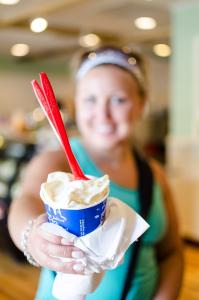
Inventor of Jell-O
Pearle Bixby Wait
(1873-1915)
The dessert was especially popular in the first half of the 20th century. The original gelatin dessert began in Le Roy, New York, in 1897, when Pearle Bixby Wait trademarked the name Jell-O. He and his wife May had made the product by adding strawberry, raspberry, orange, and lemon flavoring to sugar and granulated gelatin (which had been patented in 1845). The powder is mixed with boiling water and then cooled to produce a gel. In 1899, Wait sold Jell-O to “Orator Francis Woodward”, whose Genesee Pure Food Company produced the successful Grain-O health drink. Part of the legal agreement between Woodward and Wait dealt with the similar Jell-O name.
Various elements were key to Jell-O becoming a mainstream product: new technologies, such as refrigeration, powdered gelatin and machine packaging, home economics classes, and the company’s marketing.
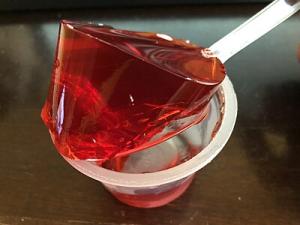
Melitta Bentz
(January 31, 1873 – June 29, 1950),
She was a German entrepreneur who invented the paper coffee filter in 1908. She founded the company Melitta, which still operates under family control.
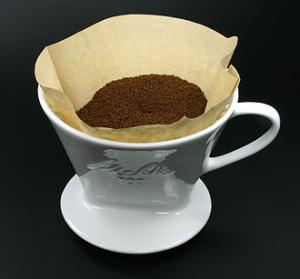
Nephi Miller
(November 24, 1873 – June 18, 1940)
He was a pioneer in the modern practice of migratory beekeeping.
He started Miller’s Honey in 1894 and is the preferred honey that has been the Utah Standard since then.
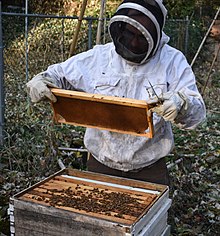
James L. Kraft
(December 11, 1874 – February 16, 1953)
He was a Canadian-American entrepreneur and inventor and the founder of Kraft Foods Inc. Kraft immigrated to the United States from Canada in 1902. He developed a patented pasteurization process for cheese, allowing it to be shipped long distances, making him the first to patent processed cheese.
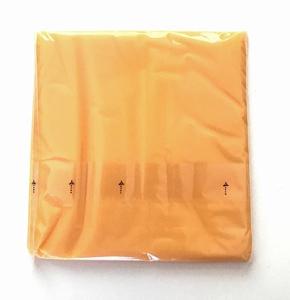
Victor Hirtzler
(ca. 1875 – February 9, 1931, Strasbourg)
He was a French chef who was head chef of San Francisco, California‘s St. Francis Hotel from its opening in 1904 until 1926. One of America’s first celebrity chefs, he publicized himself and his hotel by inventing dishes, writing cookbooks, and hosting meals.
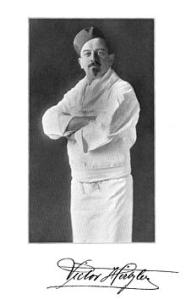
Clarence Arthur Crane
(1875-1931) |
In 1903 in Warren, Ohio, Crane started what became the largest maple sugar producer in the world at the time. He would sell the business in 1909 and make chocolate candies at his Queen Victoria Chocolate Company. Chocolates tended to melt in the summer so he thought about producing a candy mint to help his sales during the hot weather. Crane punched a small hole in the middle of this mints to resemble a life preserver, which were starting to be used on ships. Crane’s Pep-O-Mint Life Savers were born. WikiTree FREE Family Tree
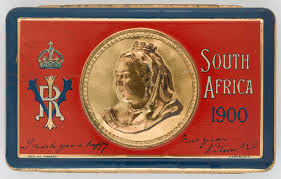
Harry Burt
(1875 – 1926)
He was an American confectioner who developed the ice-cream novelty known as the Good Humor bar. Burt is widely credited with revolutionizing manufacturing, marketing, and distribution techniques for ice-cream products.
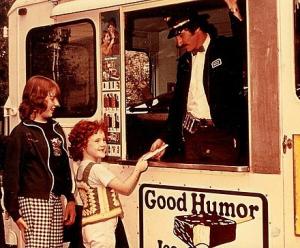
Claud A. Hatcher
(August 20, 1876 – December 31, 1933)
He was an American pharmacist, businessman, and inventor from Columbus, Georgia, who is best known for creating RC Cola and other soft drinks.

Christian William Feigenspan
(December 7, 1876 – February 7, 1939)
He was president of Feigenspan Brewing Company, president of Federal Trust Company, and president of the United States Brewers’ Association.
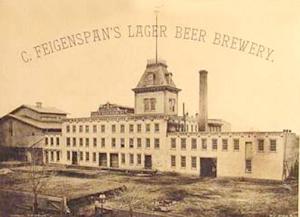
James Raford Musgrave
(1877-1938)
He founded the Musgrave Pencil Company in 1916. They produce their own line of products as well as custom and white label pencils for other brands. One of only three remaining American producers of pencils, the recently rebranded and family-owned Musgrave is experiencing a renaissance at the beginning of the 21st century.

Amedeo Obici
(July 15, 1877 – May 22, 1947)
He was an Italian-born American businessman and philanthropist who founded Planters. Planters is an american snack food company now owned by Hormel Foods. Planters is best known for its processed nuts and for the Mr. Peanut icon that symbolizes them. Mr. Peanut was created by grade schooler Antonio Gentile for a 1916 contest to design the company’s brand icon. The design was modified by a commercial artist and has continued to change over the years.
In 1889, his mother’s brother, Vittorio Sartori, invited him to come to the United States. The uncle, his wife and two children had earlier emigrated and lived in Scranton, Pennsylvania.

Jacob Schick
(September 16, 1877 – July 3, 1937
He was an American military officer, inventor, and entrepreneur who patented an early electric razor and started the Schick Dry Shaver, Inc. razor company. He is the father of electric razors.
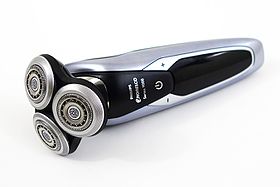
James Dole
(September 27, 1877 – May 20, 1958),
Dole was also known as the “Pineapple King”, and was an American industrialist who developed the pineapple industry in Hawaii. He established the Hawaiian Pineapple Company (HAPCO) which was later reorganized to become the Dole Food Company that operates in over 90 countries. Dole was a cousin (once removed) of Sanford B. Dole, President of the Republic of Hawaii.

Prince Spaghetti’s Founders
The story of one of America’s most beloved pasta brands was born in 1912 when three immigrants from the same village in Sicily, Italy, started a small spaghetti manufacturing company in Boston’s North End. The address of their storefront: 92 Prince Street.
It was a perfect partnership. Gaetano Salvatore La Marca (1878–1955) was the administrator,
Giuseppe Seminara was the salesman and
Michele Cantella was the pasta maker.These entrepreneurs had no way of knowing that their little company would become one of the largest pasta manufacturers in the country.

Northam Warren
(May 15, 1878 – May 14, 1962)
He created the formula for Cutex Cuticle Remover. Cutex is a brand of nail care products, owned by Revlon, Inc. It as a major nail care brand in the twentieth century.

Charles Joughin
(August 3, 1878 – December 9, 1956)
He was a British-American chef, known as being the chief baker aboard the RMS Titanic. He survived the ship’s sinking, and became notable for having survived in the frigid water for an exceptionally long time before being pulled onto the overturned Collapsible B lifeboat with virtually no ill effects.
According to his own testimony, Joughin kept paddling and treading water for about two hours. He also admitted to hardly feeling the cold, most likely thanks to the alcohol he had imbibed. When daylight broke, he spotted the upturned Collapsible B lifeboat, with Second Officer Charles Lightoller and around 30 men standing on the side of the boat. Joughin slowly swam towards it, but there was no room for him. A man, however, cook Isaac Maynard, recognized him and held his hand as the Chief Baker held onto the side of the boat, with his feet and legs still in the water. Another lifeboat then appeared and Joughin swam to it and was taken in, where he stayed until he boarded the RMS Carpathia that had come to their rescue. He was rescued from the sea with only swollen feet.
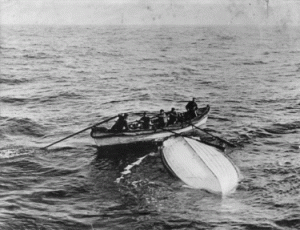
James Doumakes
(1879-1956),
James Doumakes was a Greek immigrant who arrived in the United States in 1900. James Doumakes and his son were not merely confectioners, but established a marshmallow manufacturing business that grew over time to national prominence. The Doumakes Marshmallow Company, founded in Los Angeles in 1921, held at least two patents associated with the production of marshmallows, one issued in 1928 and another issued in 1958. The Doumakes Company are largely credited with making the marshmallow a household treat.

B. Reese
(May 24, 1879 – May 16, 1956)
He was an American inventor and businessman known for creating the number one-selling candy brand in the United States; Reese’s Peanut Butter Cups, and founding the H. B. Reese Candy Company. In 2009, he was posthumously inducted into the Candy Hall of Fame.
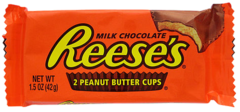
Born in 1880’s
White Castle (restaurant) Founder
Walter (Walt) A. Anderson
(1880–1963)
Walter was a cook, who had been running food stands in Wichita since 1916, when he opened his first diner in a converted streetcar. After a second and third location, he was looking to open a fourth location when he met Edgar Waldo “Billy” A. Ingram (1880–1966), an insurance and real-estate man, and together they started the White Castle chain.
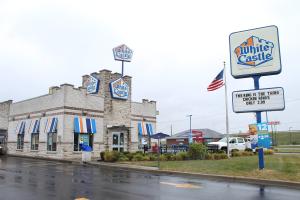
Otto Frederick Rohwedder
(July 28, 1880 – November 8, 1960)
He was an American inventor and engineer who created the first automatic bread-slicing machine for commercial use. It was first used by the Chillicothe Missouri Baking Company.
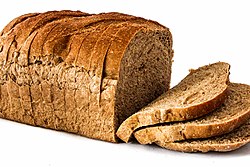
David Evans Strickler
(July 12, 1881- December, 1971)
The origin of the banana split is disputed, but most historians believe it was first created in 1904 by an optometrist in Latrobe, Pennsylvania, named David “Doc” Strickler. Strickler was inspired by the fruit laden sundaes he saw while vacationing in Atlantic City in the summer of 1904, and aspired to create something similar when he returned to Latrobe using the banana fruit, which, in those days, was shipped to Pennsylvania by way of New Orleans.[2] The sundae he concocted originally cost 10 cents, twice the price of other sundaes, and caught on with students of nearby Saint Vincent College. News of a new variety of sundae quickly spread by word-of-mouth and through correspondence and soon progressed far beyond Latrobe. Strickler went on to buy the pharmacy, naming it Strickler’s Pharmacy, while keeping his office on a top floor.

Roy W. Allen
(September 30, 1882 – March 26, 1968)
He was an American entrepreneur who is best known for being a founder and namesake for A&W Root Beer and A&W Restaurants.

Joseph L. Rosefield
(Dec 18, 1882 – Nov 8, 1958)
He was a California food businessman who invented modern, nonseparating peanut butter in 1922 – 1923. His family business, the Rosefield Packing Company, was based in Alameda. His new production process was licensed to another company to make Peter Pan peanut butter in 1923. Rosefield Packing later marketed Skippy peanut butter in 1932; both brands are still sold today. It also introduced cylindrical “wide-mouth” jars for peanut butter in 1935. Peanut butter then became a vast food industry. Among other roles, Rosefield Packing provided emergency supplies of peanut butter to Hawaii during World War II. Rosefield’s family sold Rosefield Packing and the Skippy brand to Best Foods in 1955.
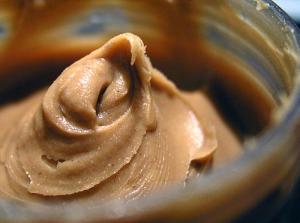
Red Mill Fouder’s Family Tree
Franklin Virgil Moore (1882 – 1971)
+ Ethel Ella Sacre (1884 – 1959)
= Kenneth Earl Moore
Kenneth Earl Moore
+ Doris Dell Learnard
= Bob Moore (executive)
February 15, 1929 – February 10, 2024)
He was an American food executive and philanthropist. He and his wife Charlee founded Bob’s Red Mill, a brand of whole-grain foods and baking products, in 1978. Known for his white beard, red vest, bolo tie, and flat cap, an illustration of Moore’s face is found on all of the company’s products, alongside the salutation “To Your Good Health”. Moore was a Christian. He was known for his white beard, red vest, bolo tie, and flat cap and playing the piano.
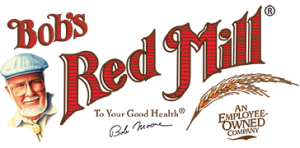
Daniel William Mikesell
(1883-1965)
Daniel started Mikesell’s Potato Chip Company which is a Dayton, Ohio-based producer of potato chips and other snack foods. It bills itself as the “oldest continuously operating potato chip company in the United States.”
In 1910 Mr. Mikesell purchased the equipment to manufacturer photo chips, his belief was the best tasting chip would be made in peanut oil. Over one hundred years now the company is still going strong. Mr. Mikesell’s potato chips are sold world wide.In 2010, Mikesell’s celebrated its 100th year as a potato chip brand. – Find a Grave Memorial
Varieties of chips produced by the company include Original, Groovy (ridged), Old Fashioned, Himalayan Sea Salt and Vinegar, Reduced Fat, No Salt, Green Onion, Honey Barbecue, Barbecue, Zesty Barbecue, Mesquite Smoked Bacon, Cheddar & Sour Cream, and Good’n Hot. Mikesell’s makes other products, including hull-less “Puffcorn Delites.” Puffcorn Delites are made in four flavors—original, cheese, movie theater butter, salted caramel, and newly Pepperoni Pizza. A local candy maker, Esther Price, sells the chips coated in chocolate.
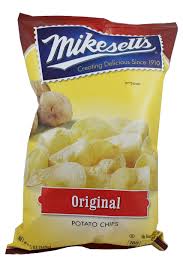
Franklin Clarence Mars
(September 24, 1883 – April 8, 1935)
He was an American business magnate who founded the food company Mars, Incorporated, which mostly makes chocolate candy. Mars’ son Forrest Edward Mars developed M&M’s and the Mars bar.
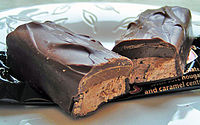
Mr. Bubble’s Parents
Edward Charles Schafer (1883-1927)
+ Bertha Maybelle Hare Schafer (1891-1943)
Harold Schafer
(February 1, 1912 – December 2, 2001)
He was a North Dakota businessman, entrepreneur and philanthropist who founded the Gold Seal Company, the original maker of Mr. Bubble. He also was a major benefactor in the tourist town of Medora, North Dakota and the Medora Musical.
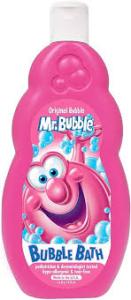
Elmer Louis Cline
(March 6, 1884– June 4, 1965
Wonder Bread is an American brand of sliced bread named by Elmer Cline.
The Taggart Baking Company of Indianapolis, Indiana, began producing Wonder Bread that debuted on May 21, 1921, following a blind promotion with ads that only stated a “Wonder” was coming on that date. The brand was named by vice president for merchandising development Elmer Cline, who was inspired by the International Balloon Race at the Indianapolis Motor Speedway. Cline was filled with “wonder” by the scene of hundreds of balloons creating a kaleidoscope of color resulting in the iconic red, yellow and blue balloons featured on the Wonder Bread logo. The logo was designed by commercial artist Drew Miller while he was on staff at a Chicago ad agency.
Continental Baking Company purchased Taggart in 1925. This made Wonder Bread a national brand and added “It’s Slo Baked” to the logo. It was one of the first companies to sell sliced bread nationwide by 1930. The brand is currently owned by Flowers Foods in the United States

Henry Charles Kessler Sr.
(1884-1962)
Created and produced the York Peppermint Pattie.
About 1920, Henry Kessler founded the York Cone Company Corporation on South Pine Street in York, Pennsylvania. The company originally sold ice cream cones and waffles before Kessler wanted to make a chocolate and mint themed candy. Although news articles commonly have it that the York Peppermint Pattie was first produced in York, Pennsylvania by Henry Kessler at his York Cone Company in 1940, a trademark application for “York Peppermint Pattie Mint (Candy)” filed by York Cone Company Corporation on February 10, 1949, shows a first use in commerce date of January 28, 1922, soon after the founding of the company. The trademark registration number 0564557 was awarded on September 30, 1952.

Although chocolate-covered peppermints already existed before the York Peppermint Pattie came on the market, the York differed in that it was firmer and crisp, while the competition was softer and gooier. A former employee and York resident, Phil Kollin, remembered the final test that sample patties went through before leaving the factory: “It was a snap test. If the candy didn’t break clean in the middle, it was a second.”
The business expanded sales beyond the local market and without consumer advertising the York Peppermint Pattie was being sold in the Northeast, parts of the Midwest and in Florida.
On August 22, 1966, Charles M. Schulz introduced a character named Peppermint Patty to the Peanuts comic strip.

In 1972, the York Cone Company was acquired by Peter Paul, who then launched the York Peppermint Patties nationally in 1975.
Arthur Perdue
(1885–1977)
He was an American businessman and the founder of Perdue Farms along with his wife Pearl in 1920. The business was started in his backyard, and at the time only produced table eggs from chickens, but eventually grew into a $4.1 billion company.
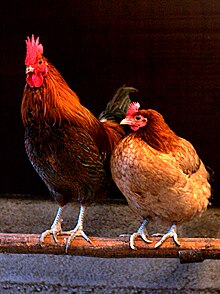
He was the father of
Frank Perdue
(May 9, 1920 – March 31, 2005)
He was for many years the president and CEO of Perdue Farms.
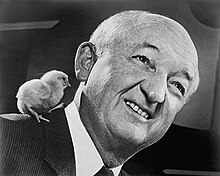
Clarence Birdseye
(December 9, 1886 – October 7, 1956)
He was an American inventor, entrepreneur, and naturalist, considered the founder of the modern frozen food industry. He founded the frozen food company Birds Eye. Among his inventions during his career was the double belt freezer.

Julius Freed
(August 13, 1887 – April 23, 1952)
He was an American banker, mechanical engineer, and amateur pigeon racer, notable for his involvement in the creation of the beverage Orange Julius.
Freed was the only son of German immigrants Adolf Freed and Irmgard Cumbie-Stanz, who settled in California in 1902. Although Freed’s engineering prowess brought forth many innovations, including:
- The auto-cleaning spectacles,
- An inflatable shrimp trap and
- A portable pigeon bathing unit,
but he is arguably best remembered for his contribution to the beverage industry with the Orange Julius.Geni
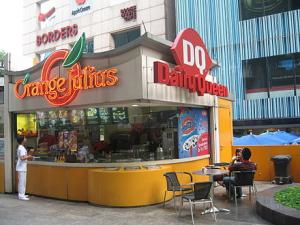
Next Time on
HOARATS
To Understand
What I love and How I Write About History
Hit the Link Above.
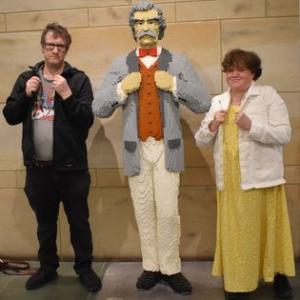
To understand about this particular series I’m writing about, please read
The Catholic Bard’s Guide To History Introduction
And to view a historical article click on



